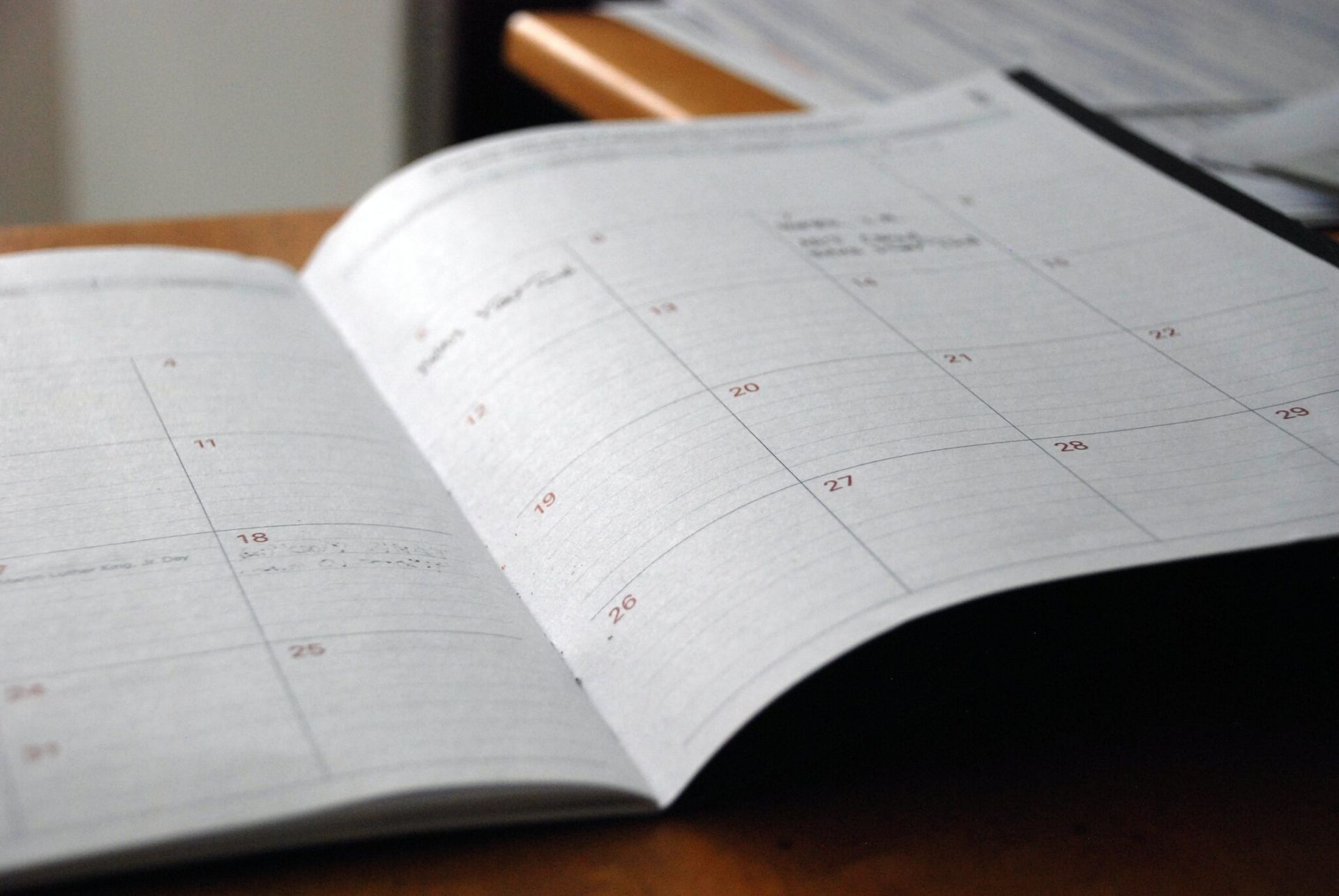Don’t Get Stuck in the Weeds—Use This Framework to Audit and Transform Your Day
We all have days when we come home (or walk over to the living room these days) after working all day and feel like nothing significant was accomplished. Feel unfulfilled. Frustrated. Sure, the inbox is cleared, and a couple of admin tasks are knocked off the list, but that just doesn’t cut it.
You may have even done something challenging that is impressive to others and is very valuable, but you still don’t feel satisfied.
I’ve been there. Many times. It’s not fun. But that’s not even the worst part; it happens, and you can’t even pinpoint why or how.
The same goes for the days that you feel good about. Without understanding the underlying reasons why you feel a certain way and what contributes to it, you won’t know how to recreate it consistently.
Simply said, “Good” days and “Bad” days just happen. Randomly.
And this is exactly the thought that made me anxious.
I want to be in control. As much as I can be. Obviously, you can’t control external factors, but if you have a handle over things internally, there’s a higher probability of creating more fulfilling days.
At some point in 2019, I read The Big Leap, which made me roll my eyes quite a bit but there were some thought-provoking concepts in there behind the mumbo-jumbo. What resonated most for me was the framework that was introduced to explain the Upper Limit Problem and hitting the proverbial ceiling. It was simple and powerful. But it took me a few months to internalize the concept and figure out how to best apply it in my day to day and make it practical. And the result was what I call Zones of Activity which I’m going to share with you here.
Zones of Activity
Zones of Activity is a 2×2 matrix that divides your activities into one of the quadrants. Every action you take lands somewhere on Skill and Leverage axes and belongs to one of the quadrants.
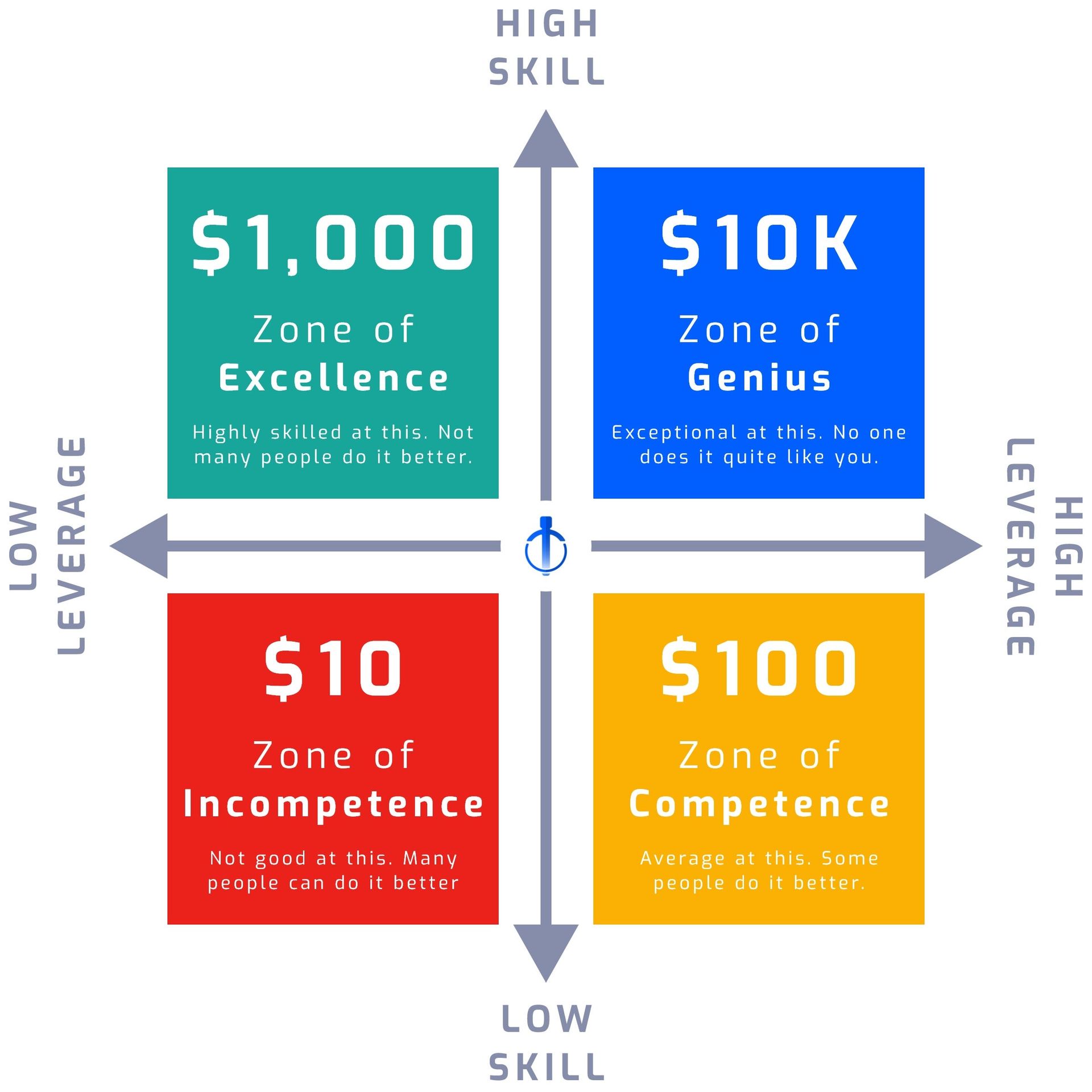
Over the few months that I toyed around with this framework and tried to internalize it, I made some tweaks to the definitions, and I combined it with Khe Hy’s $10k framework to make it easier to conceptualize. Don’t take the $10k framework quite literally; it’s just a general multiplier indicator.
Chances are you’ve never knowingly thought about your activities within this framework, but intuitively, this is something you have used to navigate within your professional life. Most highly functioning individuals operate mainly within their Zone of Excellence . But the magic lies in finding the work in your Zone of Genius and maximizing it.
I’m getting ahead of myself. Let’s take a step back first and explore each zone first:
1. Zone of Incompetence ($10/hr)
This may sound harsh, but you’re probably spending a big chunk of your time in the Zone of Incompetence. These are highly addicting activities. Don’t you love the feeling when you clear your email? That Inbox Zero definitely releases some dopamine.
These are mainly busywork. If you can do a task without being actively engaged (remember that time you copy/pasted stuff to Excel?), then it’s probably in this quadrant.
You can’t avoid these completely, but you should be aware of them and minimize them as much as possible.
2. Zone of Competence ($100/hr)
In this zone, you are doing activities that are valuable, and you are good at it. The caveat is, there are many people out there who are also good at it , and therefore it doesn’t separate you from others.
Some examples of this sort of task could be writing a script to automate something simple, perhaps setting up a Zap, or diligently updating your CRM.
Nothing wrong with these tasks. They’re just not very high impact. Don’t get lost in them. Delegate these as much as you can.
3. Zone of Excellence ($1000/hr)
If your actions land in this zone, you are already at an advantage over most. These are tasks that require specialized skills, and they’re often cultivated over time.
If you practice engineering, medicine, or law, this is where you automatically land. The downside to Zone of Excellence is, it lacks leverage . It’s comfortable. It’s dependable. But it may or may not be meaningful. Most people who are lucky enough to reach here aren’t eager to push past it. It’s uncomfortable, and the perceived risk is too high. Classic loss aversion fallacy.
4. Zone of Genius ($10k/hr)
What work do you do that doesn’t feel like work? When time goes by quickly. When you’re in the “zone” or, as psychologist Mihály Csíkszentmihályi puts it, in the “flow”.
This is work that you have a high level of mastery , you enjoy it , and it has high leverage . When you’re operating in your Zone of Genius, work is exciting, scintillating, and meaningful. And it’s completely based on your own creative style.
“If you don’t find a way to make money while you sleep, you will work until you die.” — Warren Buffet
The Zone of Genius is counterintuitive; It comes to you naturally, but you have to actively look for it so you can identify it and maximize it.
So, what does this mean? How can you use it?
The first step in applying this framework is building self-awareness. When I first learned about the different zones, I had no idea how much time I spent in each zone so I had no way of knowing how to utilize it. I’m going to share the three tools I personally used to leverage this framework. You can think of these tools as a ladder; start with the first one and once you feel comfortable, move up. It starts with a Time Audit.
Tool #1: Time Audit
A great first step is to track your time and categorize your work against each different zone. I personally use Toggl Track , and I add an hourly rate tag to each time entry before I start the timer.
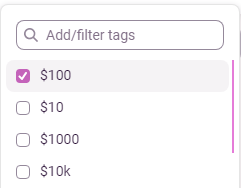
This makes it really easy to track against each quadrant, and you can look at your report at the end of the week, month, or year to see how much time you’ve spent in each quadrant.
It does something even more important than that. By selecting an hourly rate tag as you start working on something, it makes you think twice; Is this really the best use of my time? Should I focus on a higher value task first?
When you complete a time audit, you can then look at your reports and see how much time you’ve spent in each zone. This is what it looks like for me for the final quarter of 2020:
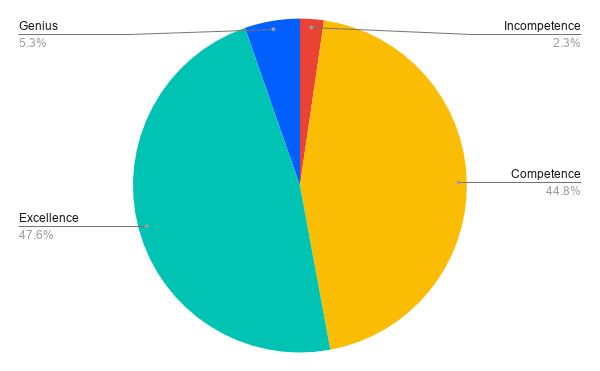
This is typical of an early-stage founder; the goal would be to gradually increase the time spent in Zone of Genius as time goes by and delegate as much as possible from the other zones.
Tool #2: Journal
By taking the time to reflect on each day, you can gain better insight and clarity into what kind of work you enjoy, what do you consider a $10k/hr work vs. $1000/hr work, for example, and why, and how can you leverage this information from now on.
“Keeping regular work diaries, which took no more than ten minutes a day, gave many of our research participants a new perspective on themselves as professionals and what they needed to improve.” — Professor Teresa Amabile, Harvard Business Review
Take the time to set yourself up properly each morning by following a Morning Routine and end each day with an Evening Reflection . You can take it a step further and set aside some time each week to do a Weekly Review , summarize what worked and what didn’t, and capture actions you can take going forward that serve you best and can increase the time you spent in the Zone of Genius.
Tool #3: Annual & Quarterly Planning
The final tool you can use to apply the Zones of Activity framework is taking your learnings from your time breakdown and journal and applying it to your personal plan. How much time you spend in each zone can be a very powerful metric that you can measure your progress towards your Future Self by. So when you’re defining your vision of who you want to become, think of how many hours your Future Self spends in each zone. Set Annual Goals based on your targets and create actionable Quarterly Initiatives that help you get there.
If you’re not already using a system for your personal planning, here’s a course we’ve put together with my team that’s available for free. The guided videos and worksheets walk you through the process of establishing your own personal system.
Ultimately, Zones of Activity is a framework that can help you increase self-awareness around what work you enjoy the most that creates value and what are some areas where you spend your time that don’t create enough value. It’s a practical framework that you can apply to gain better insight into how your time is split and it gives you a reference point so that you can decide on if and how you want to change it.
Challenge
Final words. I’m glad to see you’ve made it this far. I’m going to challenge you to audit your time for the next two weeks and see how much time you spend in each zone.
You’re going to surprise yourself. Trust me.
Use your results to find your Zone of Genius or start working towards it. Once you know what that looks like, maximize the time and energy you spend in that zone. Even half an hour each day can be huge. In doing so, not only will you feel fulfilled when you go to bed at night, but you will also create a meaningful impact that is in harmony with your true self. And that is powerful.
As a manager or a leader, you can also introduce this framework to your team in your next performance management cycle to help each team member understand their own Zone of Genius. This intelligence provides a reference to make sure the right people are in the right role, working on the right projects and tasks and those who aren’t, find a more suitable role. This can massively improve employee performance and engagement.
I want to hear about your time audit, so feel free to shoot me an email at parham@lynchpyn.com and tell me what you learned. We study and apply frameworks like this within LynchPyn to help companies that use our platform build a culture of execution excellence, passionate engagement, and high-performance.





